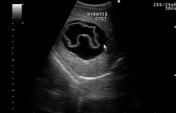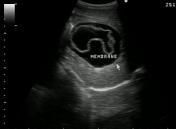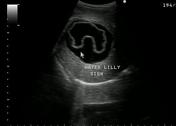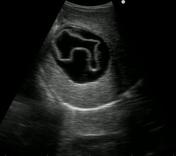Presentation
Referred to the Emergency Department for a FAST scan after sustaining blunt abdominal trauma. Otherwise asymptomatic.
Patient Data







A well-defined cystic lesion measuring 8.0 x 6.5 x 7.4 cm in the right lobe of the liver (segment 7 and 8) with low-level internal echoes. The cyst shows a detached, irregular laminated membrane inside it which appears to float within the contents of the cyst.
Rest of the study is unremarkable.
Case Discussion
The findings are suggestive of a hepatic hydatid cyst with ultrasound "water lily sign". According to the WHO classification of hepatic hydatid cysts, the water lily sign is seen in stage CE3a, which represents a transitional stage between active and inactive disease. The mechanism of detachment of membrane is related to decreased intracystic pressure, degeneration, host response, trauma or following therapy.




 Unable to process the form. Check for errors and try again.
Unable to process the form. Check for errors and try again.